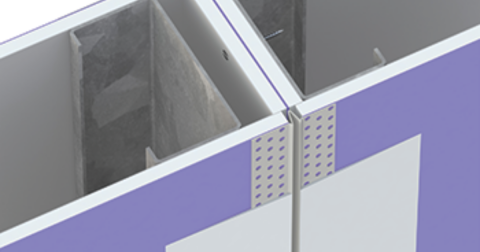Greetings! We will be conducting our May Chapter Meeting and the presentation will be "Adopting Lean Principles, Methodologies, and Practices in the Construction Industry: Observations on Challenges, Considerations, and Possible Approaches" Presented by Alex Johnson with Newforma. Mark your calendars for June 8th at 12:00pm EDT. We look forward to having you attend this free webinar, register today as space is limited!
In less than 2 months, CSINext (and CSI) will be having a changing of the guards. When I was on the Institutes Nominating committee we had a large pool to draw from. At the there must have been 300+ names. However, it is always a challenge for the chapter to fill the slate. But once again we have found our board for FY17. If you have some extra time and want to enrich your CSI experience, I do encourage you to reach out to the CSINext board and see what can be done. But we do want to thank those who have stepped up to the plate...
You can’t turn on a television these days without seeing political ads or a news report about the latest primary (and don’t get me started on how Colorado doesn’t have primaries and therefore I personally had no say at all in selection of presidential candidates). As I write this, the presumption is that it will be a Trump-Clinton race in November. If you look around you’ll also see that people are googling how to move to Canada if one or the other candidate wins. I also subscribe to a site promoting Irish tourism, which has been telling me that there are more than a few towns there actually advertising that they’ll welcome Americans who want to leave the country after the election. Really? They’d give up on a whole country, a whole way of life, because of who is occupying the White House? I’m not sure I’m quite ready to throw that baby out with that bath water.
“It was the best of times, it was the worst of times, it was the age of wisdom, it was the age of foolishness…” this is the opening sentence from “A Tale of Two Cities” by Charles Dickens. But you may be asking yourself, what does this have to do with CSI, construction or the internet? Everything and nothing, as I reflect on when I became in Institute Director 10 years ago (yep, July 1, 2006) it was a trial by fire and the boards first attempt to do a comprehensive revision to governance and its bylaws.
Please - say "Thank you!"
Among the first things parents drum into their children's heads are the words please and thank you. Parents do such a good job that these words become automatic, and, to a great extent, they become white noise. If they are used automatically, without conscious thought, what good are they? Do they mean anything? Why do we insist children use them, even if they don't mean what they say?
Here in Colorado, we’ve had a mild and rather dry winter. It’s been a bit too warm for my liking, with above-average temps for much of February and March, probably January too. While we had an above-average snowpack in January, it’s dwindled and could use some help about now. Not only do front-range communities look toward that to predict water supplies for the rest of the year, but we also need rain and snow to reduce our wild fire susceptibility. Plus the dog loves it. So, as I write this, during the last week of winter, we’ve started off dry and with nearly 70° F. Tomorrow the high temps are supposed to be below normal (I think we should call that “typical” instead of “normal”, don’t you?) somewhere closer to 30° F and we’re supposed to have snow. Of course, there’s always the chance that they miss the forecast, and tomorrow is sunny and dry all over again.
Greetings! We will be conducting our May Chapter Meeting and the presentation will be "He Said, She Said (Managing Contract Issues)" Presented by Wayne Seiler, PSP with Construction Process Solutions Ltd. Mark your calendars for May11th at 12:00pm EDT. We look forward to having you attend this free webinar, register today as space is limited!
In the last post, we looked at the complementary clause, and saw how powerful it can be; we also looked at the limits of that power. Many architects know of that clause, and I have occasionally heard it cited, something like this: "I don't care if there is no specification for it; it's on the drawings, and you have to provide it!" In the same conversation, it wouldn't be unusual to hear, "No, I don't know how you're going to do it - that's means and methods!"
Greetings! We will be conducting our April Chapter Meeting and the presentation will be "Flex the Specs" Presented by Vivian Volz, AIA, CSI, SCIP, CCS, LEED AP BD+C who is the Principal Specifier and President of VVAS. Mark your calendars for April 13th at 12:00pm EDT. We look forward to having you attend this free webinar, register today as space is limited!
I’m very surprised that it’s already 2016. Last year evaporated before my eyes! Not only that, but January has come and gone and it’s mid-February now and it’s onward and upward for most of us.
Greetings! We will be conducting our March Chapter Meeting and the presentation will be "Why the Fuss over Volume Solids" Presented by Johnathan Meany, CSI - Behr Paint Architectural Representative. Mark your calendars for March 9th at 12:00pm EST. We look forward to having you attend this free webinar, register today as space is limited!
CSINext continues to look for ways to expand and meet the ever changing needs of Social media. While we have all of the stuff of a traditional chapter (meetings, newletters, board, etc). We don't want to loose focus of our mission. Bridging the gap between members, the industry and social media. With that we are please to announce the CSINext Discussion Groups.
Greetings! We will be conducting our February Chapter Meeting and the presentation will be "Digital Art - This is not BIM" Presented by Daniel Hargreaves, FCSI, CDT, AIA, RAS, he is the Operations Manager for SRa Architects located in Tucson, Arizona. Mark your calendars for Febraury 10th at 11:00am EST. We look forward to having you attend this free webinar, register today as space is limited!
It is with Sad news that another one of the CSI 'greats' is no longer with us. Richard A. Eustis, PE, FCSI, Lifetime Member, CCCA, CSC passed away on January 26, 2016. There are several post on Facebook that I wanted to repost here and add my own tribute to him. I personally had the honor of meeting Dick for the first time via teleconference while ...
Welcome to the all new, yet old CSINext. At the end of 2015 CSINext got a very special belated Christmas Present. The virtual host got hacked...
Although it didn't seem like it at the time, one of the best parts of my CSI chapter's certification classes was reading the A201 - not selectively, but the whole thing, beginning to end. Being the heart of the construction contract, anyone who works on a project should know what's in it. I can't quote every part of it, but it's familiar enough that I can find what I'm looking for fairly quickly. I don't deal with much of it, e.g., claims and time requirements, but there are a few parts that I find of particular interest.
I remember being, as a new CSI member, somewhat confused by our election process. Having been a voter for many years, I knew that the US president did not take office immediately, but was a president-elect for a short time. So it seemed strange that, instead of voting for the next president of CSI, we vote for a person who won't take office as president for at least a year. The other problem I had had nothing to do with the process; I simply didn't know who was running for office! But we'll get to that later.
Greetings! We will be conducting our December Chapter Meeting and in the best CSINext tradition our Holiday party in the form of an Open Forum. We are honored to have CSI President Lane Beougher and Executive Director Mark Dorsey. Mark your calendars for December 9th at 12:00pm EST. We look forward to having you attend this free Webinar event.
Greetings! We will be conducting our October Chapter Meeting and the presentation will be "How Low-e Coatings Improve Building Performance" Presented by by Nathan McKenna, CSI with PPG. Mark your calendars for November 11th at 12:00pm EST. We look forward to having you attend this free Webinar event.
In "Tell me again part 1" we looked at how proper use of reference standards can reduce the amount of text required by making those standards part of the specifications. In "Tell me again part 2" we saw how proper use of Division 01 can eliminate repeated requirements in specification sections in other Divisions. Now let's look at redundancies found on drawings and inspecifications.






